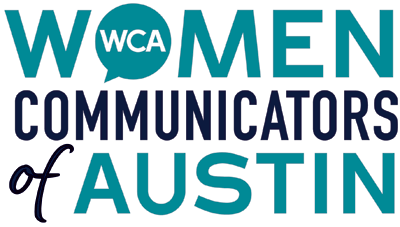Dear Mentors:
I’m applying for jobs. What are the latest recommendations for writing a good resumé? And how do I ensure my resumé is ATS-friendly?
Editor’s Note:
It goes without saying that crafting a strong resumé is important to every job seeker. But if you work in communications or marketing, a well-written resumé (and cover letter) is essential! Think of it as your first audition. But will you get in the door for that audition?
We all know that technology has changed the process of applying for a job. Three of our Peer Mentors get you up-to-speed on how to write a resumé that gets through filters and impresses hiring managers.
Fast Facts:
- An ATS, or Applicant Tracking System, is software used by companies to manage the recruitment and hiring process. It helps automate tasks like collecting and organizing applications, screening candidates, and managing communication with applicants.
- Recent data shows that 99% of Fortune 500 firms use an ATS. And even 20% of small and mid-sized organizations use them.
Read on for more guidance from our Peer Mentors. – Paige Booth
——————-
Dear Mentee,
In brief: keep your resumé clean, clear, and focused. Use a simple layout with easy-to-read fonts, clear section headings, and plenty of white space. This not only looks professional but also helps Applicant Tracking Systems (ATS) scan your resumé.
Here are some pointers to make your resumé ATS-friendly:
- Avoid graphics, tables, unusual fonts, or images. Stick to standard sections like “Work Experience,” “Education,” and “Skills.”
- Use keywords from the job description throughout your resumé, especially in your summary and work experience.
- Tailor your resumé for each job, focusing on relevant skills and achievements, and quantify your accomplishments.
- Keep it concise. One page is ideal unless you have more than 10 years of experience.
A strong, brief summary at the top can help highlight your top qualifications.
Submitting your resumé as a Word document or PDF is usually best for ATS compatibility.
Good luck,
Dear Mentee,
Kerri offers strong advice for building a clear and effective resumé, especially when it comes to formatting and tailoring your experience for the role. To expand on that, I’d add that your resumé should do more than simply list your work history; it should strategically position you for the job you want next. Think of it as a personal marketing document: concise, compelling, and forward-looking.
Here are a few additional tips to strengthen your resumé strategy:
- Lead with impact. Your bullet points should go beyond listing responsibilities to highlight accomplishments. Use action-oriented language and, when possible, quantify your results to demonstrate real value. Communications professionals often overlook this step, but numbers can speak volumes. For instance: “Built and sustained long-term client relationships, with 65% of clients retained for 3+ years.”
- Highlight what sets you apart. Don’t let standout projects or leadership moments get lost in vague bullet points. Use structure and phrasing to draw attention to what makes your experience distinct and memorable.
- Be transparent about transitions. Career pivots, breaks, or nonlinear paths are increasingly common these days, and that’s where the cover letter becomes essential.
Which brings me to a point I always stress with my mentees: cover letters are still vital, especially in communications roles. As someone who hires in this field, I look to the cover letter not just to understand your interest in the role, but to assess your writing style, tone, and how well you can connect your experience to the needs of the team. It’s also your chance to explain gaps, transitions, or unique experiences that might not fit neatly on a resumé.
That said, it’s okay (recommended, actually) to use AI to help you turn these around faster, but make sure your voice and story shine through.
In short: a clean, focused resumé will help get you through the ATS, while a thoughtful cover letter will help round out your employment history.
Happy hunting,
Hello Mentee,
Kerri and Vivvi offer excellent, practical advice. Together they’ve covered the critical aspects of both ATS-friendliness and making your resumé a compelling marketing document. Here are a few more recommendations to consider when writing your resumé.
1. Focus on Achievements, Not Just Duties
Beyond the formatting and keyword optimization that gets you past the initial screening, a truly effective resumé tells a story. It’s not just a list of jobs; it’s a narrative of your professional growth, impact, and future potential. Think long and hard about your stand-out projects, roles, and responsibilities and spend time brainstorming and quantifying your achievements. Reviewing any of your annual evaluations or any previous award submissions for your work are great places to look if you get stuck.
Also ask yourself:
- What problems did you solve?
- What improvements did you make?
- What impact did you have on your team or organization?
2. Tailor and Target – Every Single Time
This can’t be stressed enough. Every job application you submit should include a customized resumé. Read the job description carefully and highlight the skills and experiences that directly align with what the employer is seeking. If a job emphasizes project management, ensure your resumé clearly showcases your project management successes with strong action verbs. This targeted approach not only makes your resumé more relevant but also significantly boosts its ATS compatibility by naturally incorporating keywords.
3. The “So What?” Factor
As a hiring manager, when I’m reading resumés, I’m constantly asking, “So what?” What does this experience mean for my team? How does it complement us? Your resumé should answer those questions clearly and concisely. Connect your past experiences to the needs of the role you’re applying for.
In short, think of your resumé as your powerful, keyword-optimized entry ticket, and your cover letter as your personal, persuasive pitch. Both are essential for landing your next great opportunity.
Got your own career conundrum you’d like advice on?
Then sign up for the WCA peer mentoring program. It’s free to members!
Not ready to sign up yet? Submit your question to Ask a Peer Mentor. It’s all about peers who care about helping their fellow WCA members.
Compiled and edited by Paige Booth
- How can I make time to work on new business development? - September 19, 2025
- How can I get the information I need out of a job interview? - August 14, 2025
- How can I make my resumé stand out? - July 13, 2025

